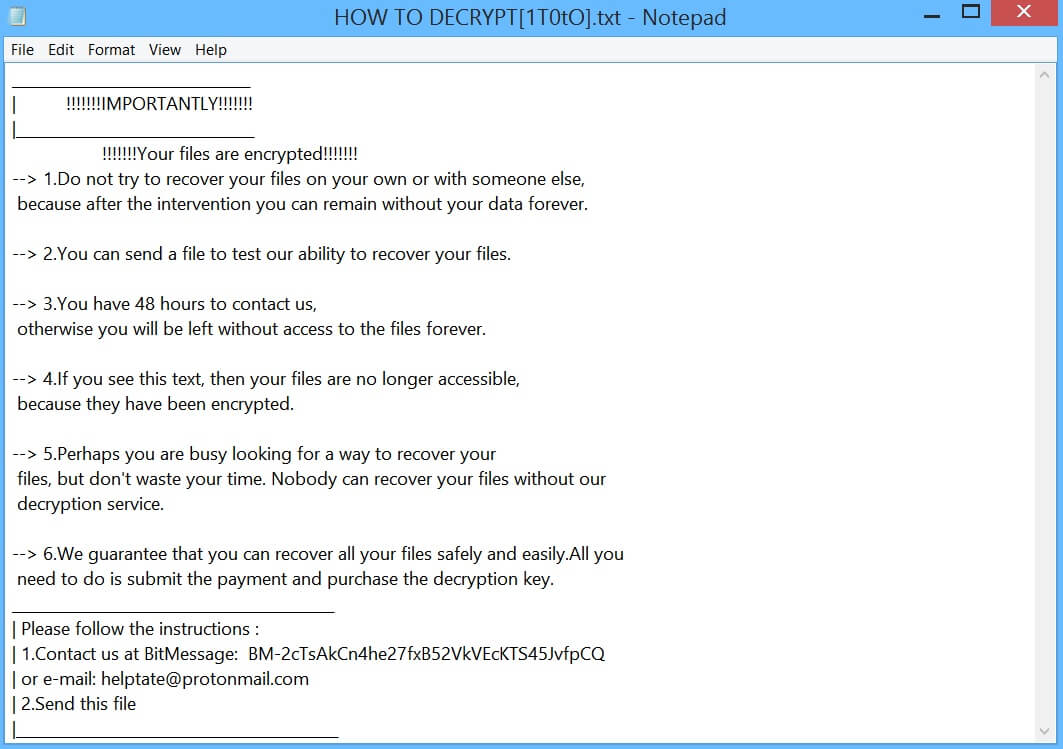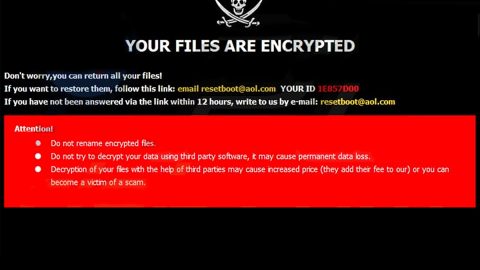What is CSP ransomware? And how does it implement its attack?
CSP ransomware is a new crypto-virus that can lock important files in an infected machine. This new crypto-virus uses a “_csp” extension in marking its encrypted files. It supposedly gives its victims 48 hours to pay for the decryption key used to recover the encrypted files. The instant it invades a targeted computer, it will launch its attack by connecting the system to a remote Command and Control server. This remote server is controlled by the creators of CSP ransomware.

After its infiltration, CSP ransomware will start a quick system scan to check if the system is already encrypted or not. Once it determines that the system hasn’t been encrypted yet, it will download its malicious components and puts them into several folders. These components are used to either launch or repress system processes, thus, allowing the crypto-malware to manipulate various processes.
CSP ransomware also utilizes an information-gathering module used to obtain data from the infected computer and use them for the stealth protection module. This second module is used to scan the system for strings of programs like Firewall, virtual hosts, a sandbox environment, and antivirus programs. Once it finds these programs, it either disables them or completely removes them from the computer to prevent them from interrupting the attack.
In addition, CSP ransomware also alters some registry keys so that it can run automatically in every system boot, making it a persistent attack and even harder to remove. Following all the system modifications, it starts to encrypt files with specific formats using the AES encryption algorithm. After the encryption, it adds the “_csp” extension to every affected file and opens a text file named “HOW TO DECRYPT[1T0t0].txt” which contains the following message:
“__________________________________
| !!!!!!!IMPORTANTLY!!!!!!!
|__________________________________
!!!!!!!Your files are encrypted!!!!!!!
–> 1. Do not try to recover your files on your own or with someone else,
because after the intervention you can remain without your data forever.
–> 2. You can send a file to test our ability to recover your files.
–> 3. You have 48 hours to contact us,
otherwise, you will be left without access to the files forever.
–> 4. If you see this text, then your files are no longer accessible
because they have been encrypted.
–> 5. Perhaps you are busy looking for a way to recover your
files, but don’t waste your time. Nobody can recover your files without our
decryption service.
–> 6. We guarantee that you can recover all your files safely and easily. All you
need to do is submit the payment and purchase the decryption key.
______________________________________________
| Please follow the instructions :
| 1.Contact us at BitMessage: BM-2cTsAkCn4he27fxB52VkVEcKTS45JvfpCQ
| or e-mail: [email protected]
| 2.Send this file
|______________________________________________”
How does CSP ransomware spread over the web?
CSP ransomware spreads over the web using the most common method used by ransomware threats – malicious spam email campaigns. Cyber crooks tend to attach a corrupted files to emails and send them to targeted or random users. The corrupted file may be an executable file, a PDF file, or a document embedded with malicious scripts used to install CSP ransomware in the system.
Terminate CSP ransomware from your computer using the removal guide provided below as well as the advanced removal steps that follow.
Step_1: First, tap the Ctrl + Shift + Esc keys on your keyboard to open the Task Manager.
Step_2: Under the Task Manager, go to the Processes tab and look for any suspicious-looking process that takes up most of your CPU’s resources and is most likely related to CSP ransomware.
Step_3: After that, close the Task Manager.
Step_4: Tap Win + R, type in appwiz.cpl and click OK or tap Enter to open Programs and Features under Control Panel.
Step_5: Under the list of installed programs, look for CSP ransomware or anything similar and then uninstall it.
Step_6: Next, close the Control Panel and tap Win + E keys to launch File Explorer.
Step_7: Navigate to the following locations below and look for CSP ransomware’s malicious components such as !README_CSP!.rtf, [random].exe, and other suspicious files, then delete all of them.
- %TEMP%
- %WINDIR%\System32\Tasks
- %APPDATA%\Microsoft\Windows\Templates\
- %USERPROFILE%\Downloads
- %USERPROFILE%\Desktop
Step_8: Close the File Explorer.
Before you proceed to the next steps below, make sure that you are tech-savvy enough to the point where you know exactly how to use and navigate your computer’s Registry. Keep in mind that any changes you make will highly impact your computer. To save you trouble and time, you can just use Restoro, this system tool is proven to be safe and excellent enough that hackers won’t be able to hack into it. But if you can manage Windows Registry well, then by all means go on to the next steps.
Step_9: Tap Win + R to open Run and then type in Regedit in the field and tap enter to pull up Windows Registry.
Step_10: Navigate to the following path:
- HKEY_CURRENT_USER\Control Panel\Desktop\
- HKEY_USERS\.DEFAULT\Control Panel\Desktop\
- HKEY_LOCAL_MACHINE\Software\Microsoft\Windows\CurrentVersion\Run
- HKEY_CURRENT_USER\Software\Microsoft\Windows\CurrentVersion\Run
- HKEY_LOCAL_MACHINE\Software\Microsoft\Windows\CurrentVersion\RunOnce
- HKEY_CURRENT_USER\Software\Microsoft\Windows\CurrentVersion\RunOnce
Step_11: Delete the registry keys and sub-keys created by CSP ransomware.
Step_12: Close the Registry Editor and empty the Recycle Bin.
Try to recover your encrypted files using the Shadow Volume copies
Restoring your encrypted files using Windows Previous Versions feature will only be effective if CSP ransomware hasn’t deleted the shadow copies of your files. But still, this is one of the best and free methods there is, so it’s definitely worth a shot.
To restore the encrypted file, right-click on it and select Properties, a new window will pop up, then proceed to Previous Versions. It will load the file’s previous version before it was modified. After it loads, select any of the previous versions displayed on the list like the one in the illustration below. And then click the Restore button.
Congratulations, you have just removed CSP Ransomware in Windows 10 all by yourself. If you would like to read more helpful articles and tips about various software and hardware visit fixmypcfree.com daily.
Now that’s how you remove CSP Ransomware in Windows 10 on a computer. On the other hand, if your computer is going through some system-related issues that have to get fixed, there is a one-click solution known as Restoro you could check out to resolve them.
This program is a useful tool that could repair corrupted registries and optimize your PC’s overall performance. Aside from that, it also cleans out your computer for any junk or corrupted files that help you eliminate any unwanted files from your system. This is basically a solution that’s within your grasp with just a click. It’s easy to use as it is user-friendly. For a complete set of instructions in downloading and using it, refer to the steps below
Perform a full system scan using Restoro. To do so, follow the instructions below.











